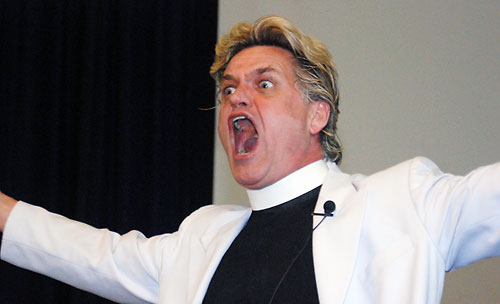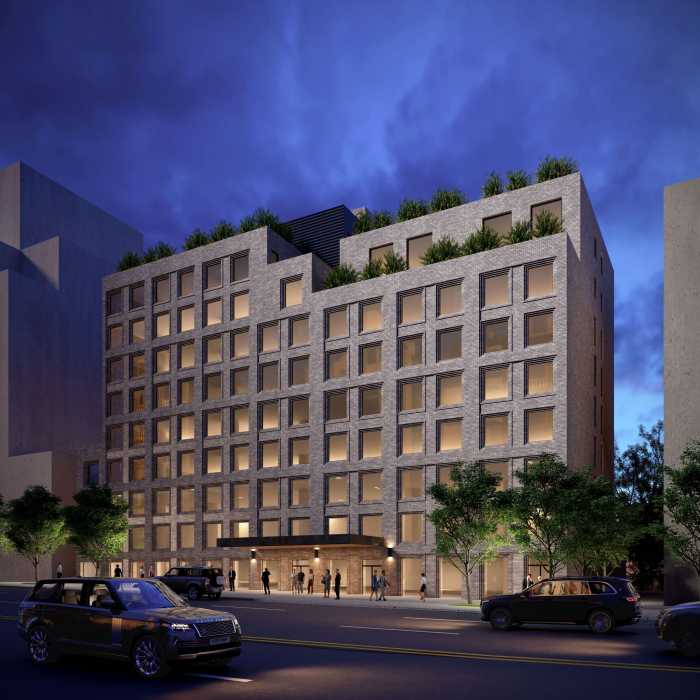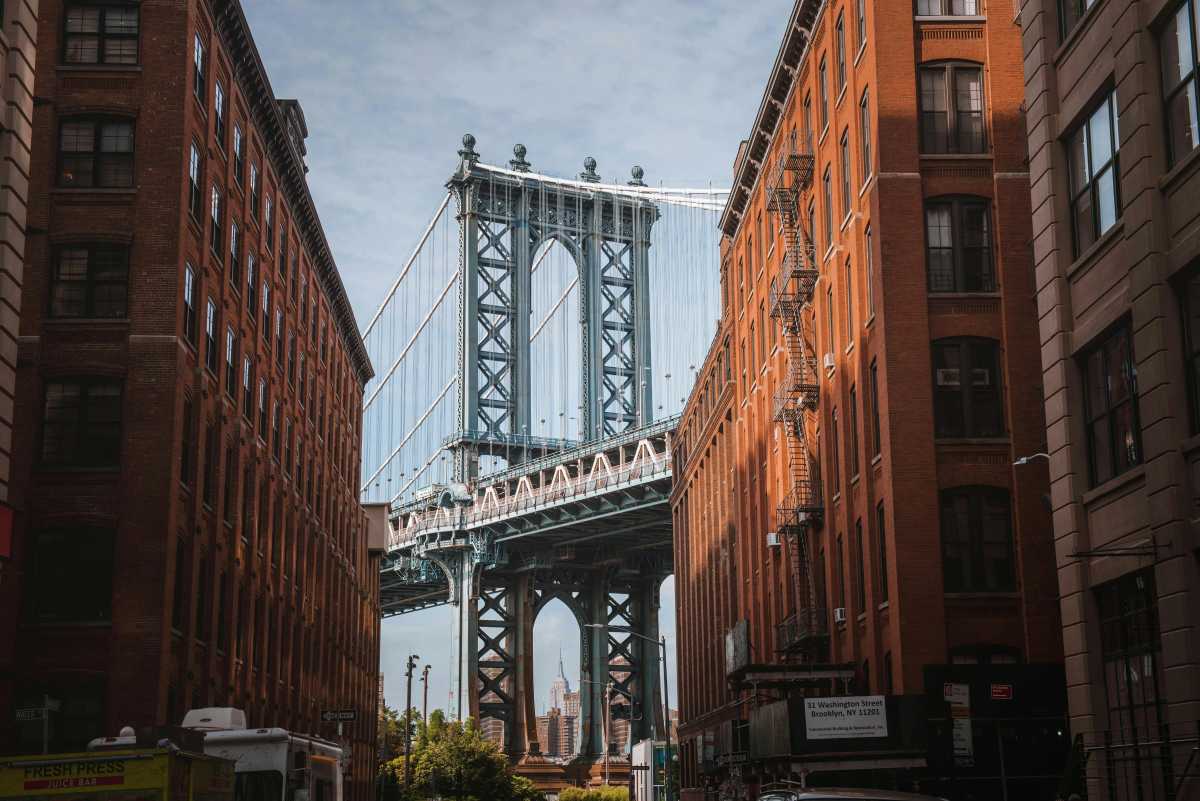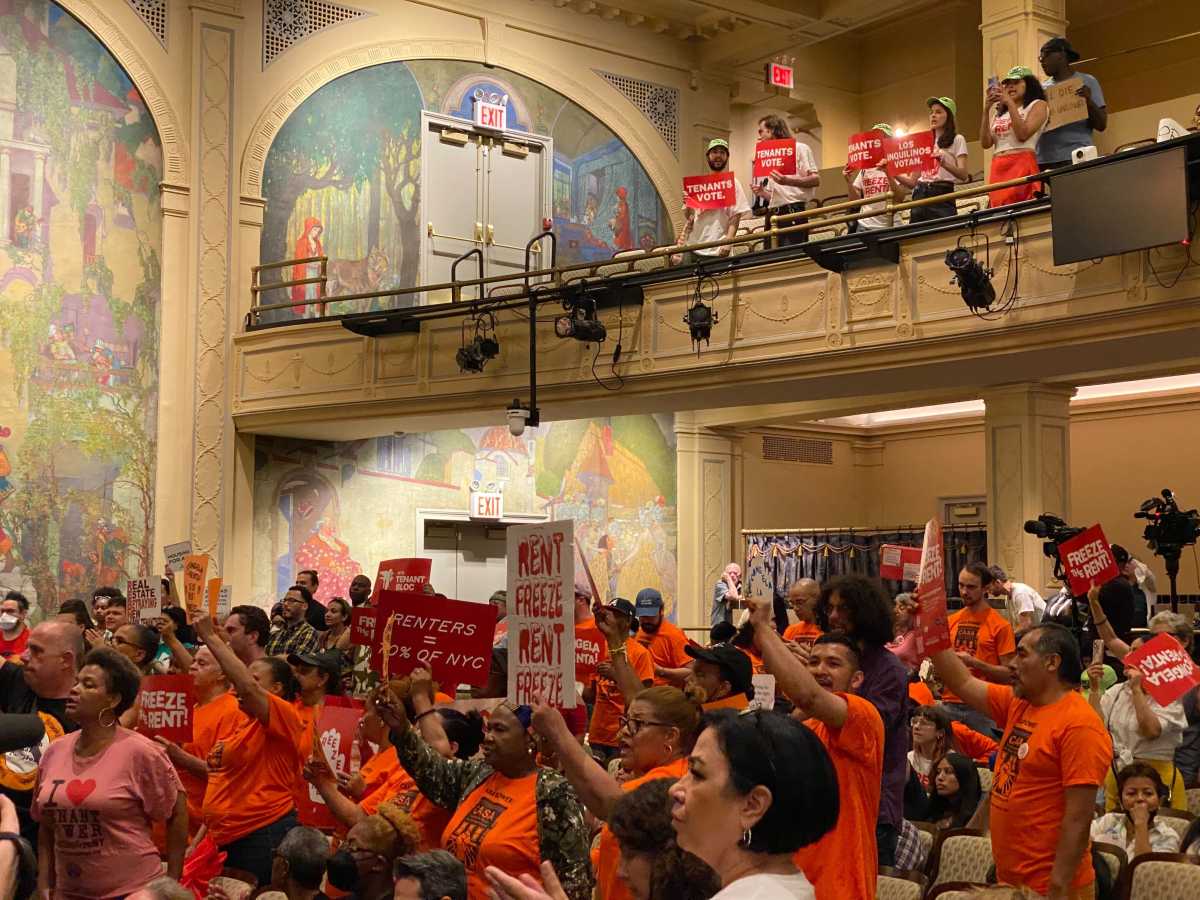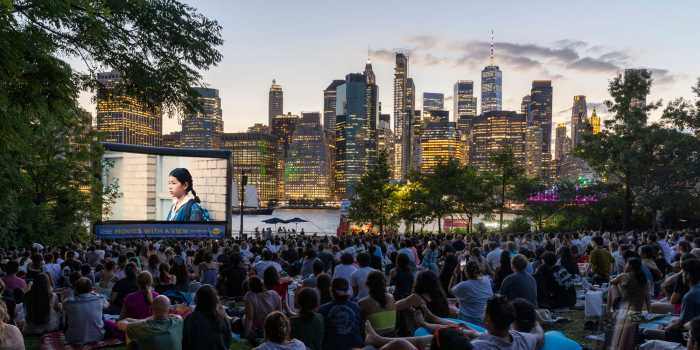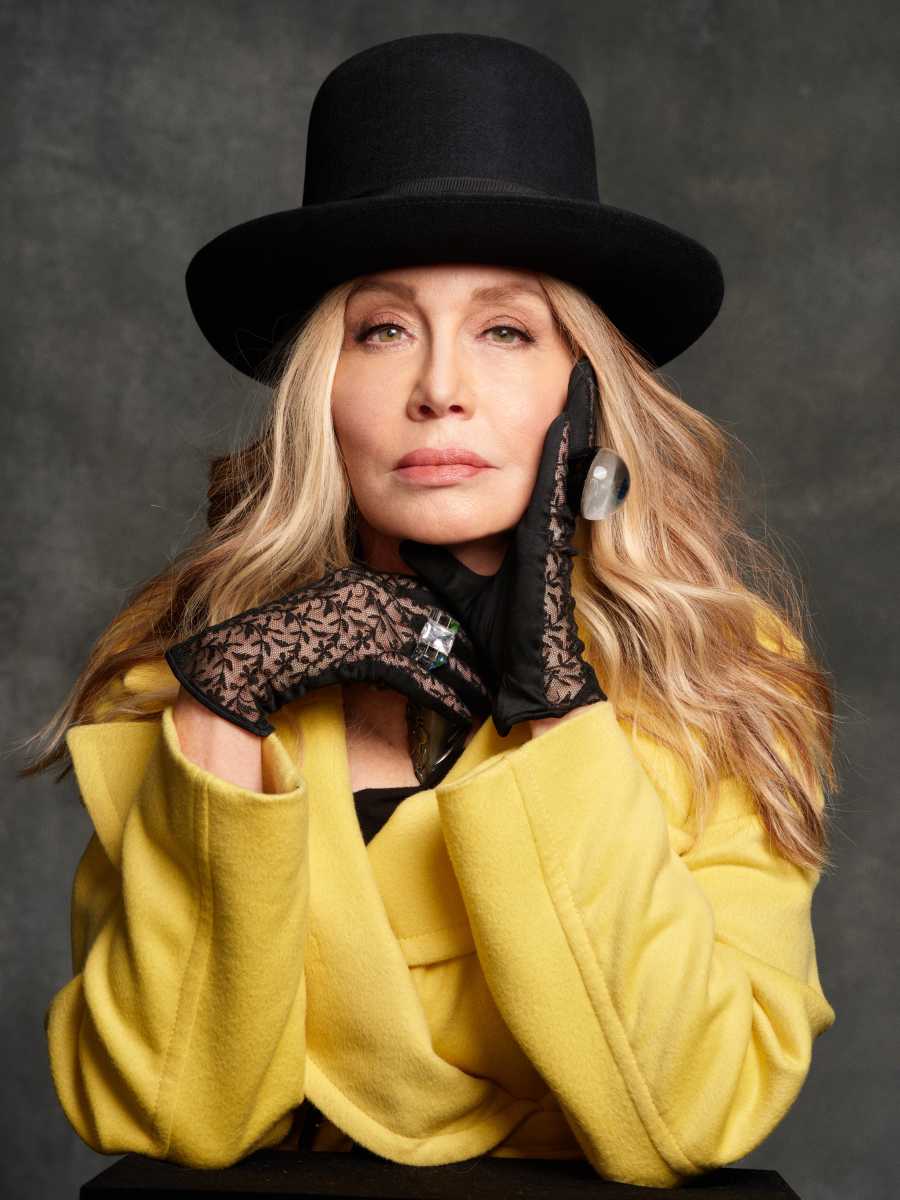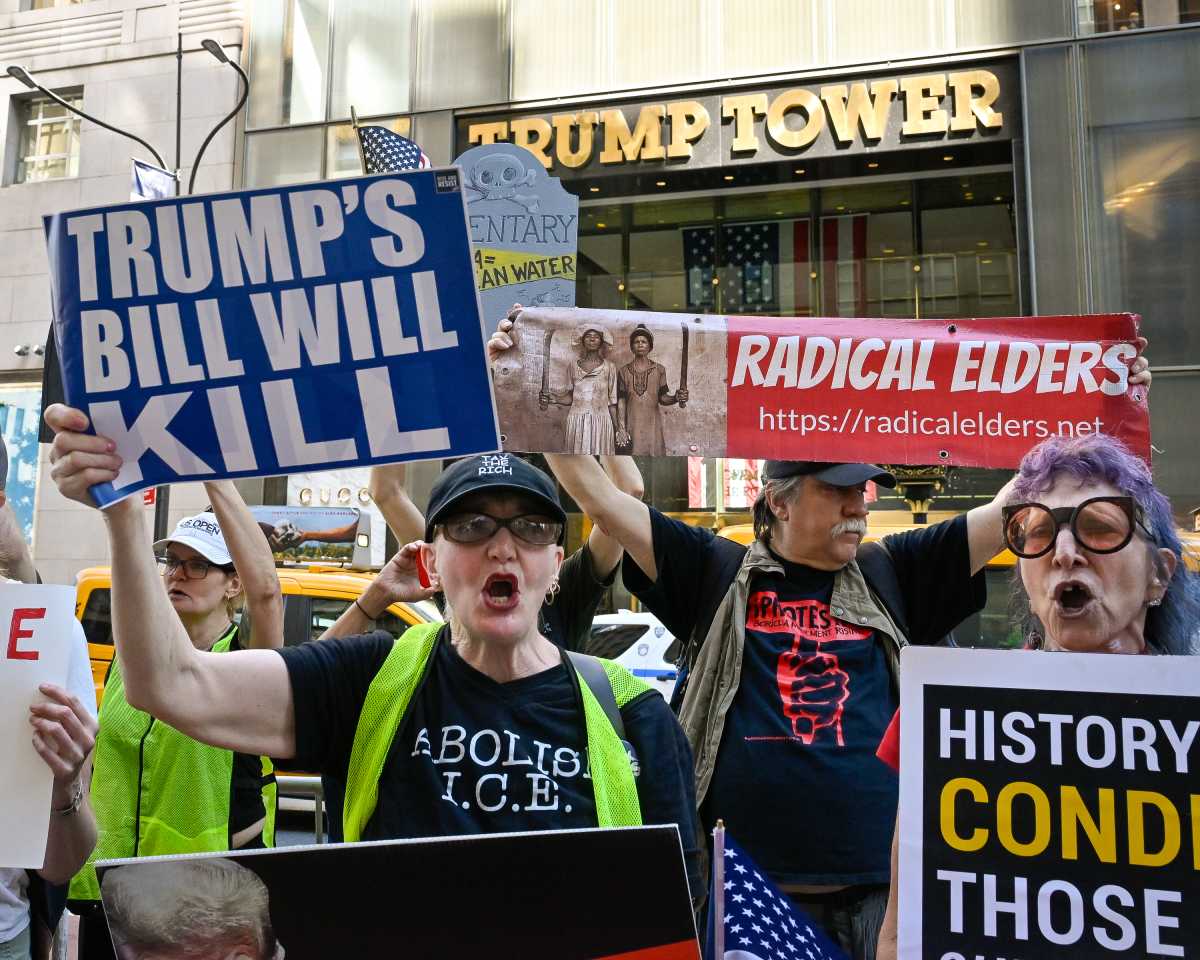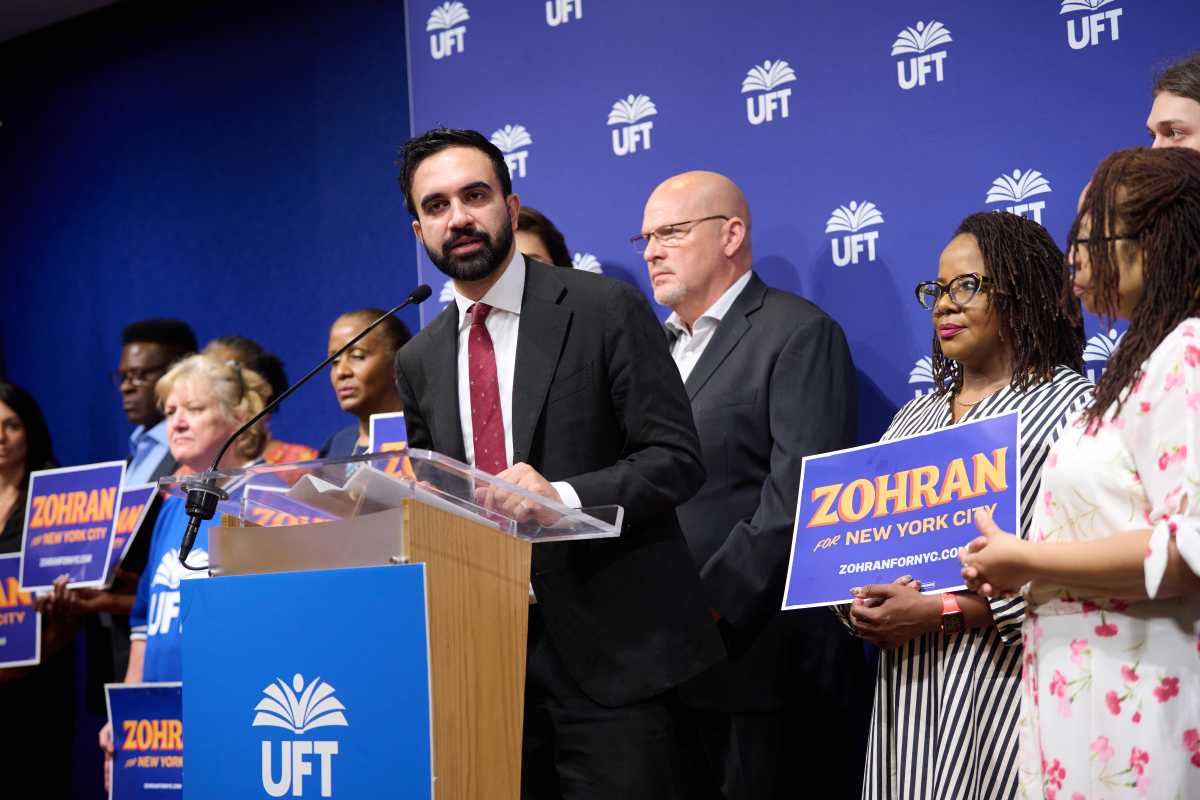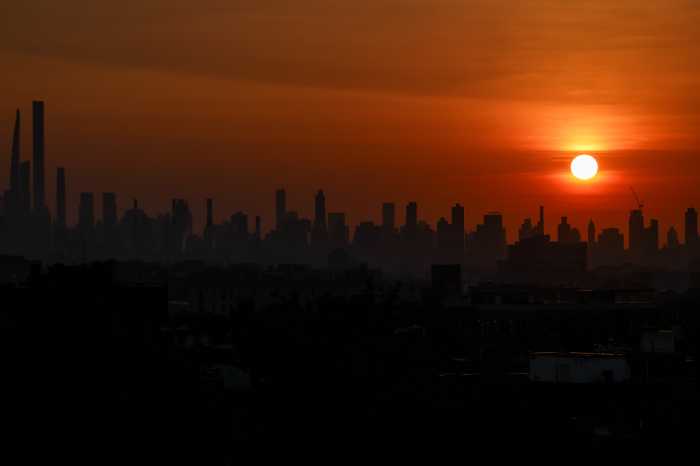The city’s plan to redevelop Coney Island with new rides, attractions, hotels and housing got a dressing-down during a boisterous public meeting on Tuesday.
Officially, the get-together was a preliminary step in the bureaucratic process towards transforming the charismatically shabby and seasonal amusement corridor into a year-round, can’t miss, theme park and entertainment district — but Coney Island being what it is, the event became a circus of street theater.
In fact, the spectacle of protest started three days before the meeting when the Queen of the Mermaid parade, Savitri D., perched herself in the Coney Island USA building on Surf Avenue and went on a hunger strike of less-than-historic proportions to show her disapproval of the city’s plan (see page 13).
The crowd of about 200 people at Lincoln HS drowned out the opening presentation of the city’s plans for Coney Island — which is broken up into three regions, “Coney East” for rides, hotels and entertainment, and “Coney North” and “Coney West” for housing and commercial development.
Most of the ire was reserved for Coney East, bounded by the Boardwalk, Keyspan Park, the Cyclone roller coaster and Surf Avenue, where the Bloomberg administration wants to buy land from private owners to create a nine-acres area zoned strictly for rides and amusements.
A single outside theme-park operator would be brought in to run the area. Existing landmarks like the Cyclone, Wonder Wheel and defunct Parachute Jump would survive the city’s buyout, but unprotected, individually operated, rides might be forced out.
The city in November called for a 15-acre, open-air theme park like Copenhagen’s Tivoli Gardens, but trimmed the plan because property owners, principally local land baron Joe Sitt, did not want to sell their tracts. Under the new proposal, such landowners would be allowed to develop lodges, restaurants and enclosed attractions — like a water park, bowling alley or arcade — on their land adjacent to the nine-acre amusement-only zone.
The result would be a 24-7-365 attraction, not the current hodgepodge of rides and games that shut down for nine months every year, city officials say.
“We looked very closely at not only at what Coney Island is today, but also what it was in its heyday and what it can be tomorrow,” said Purnima Kapur, Brooklyn director for the Department of City Planning.
Following Kapur’s presentation, a triumvirate of opposition figures led off the public-comment period, complaining that the city plan could end up turning the area into a generic strip mall filled with “entertainment retail” like a Nike superstore.
Dick Zigun, the irrepressible founder of the Coney Island Circus Sideshow who recently resigned from the city’s Coney planning board in protest, donned three differently colored hats — red, gray and black — to symbolize his different roles as neighborhood artist, former board member of the Coney Island Development Corporation, and advocate for the amusement industry.

“To call this plan the ‘world’s playground’ is George Orwell-doublespeak,” said Zigun. Zigun wants the city to return to its original plan, which had more rides and less room for enclosed attractions and entertainment retail.
Anti-consumerism preacher (and actor) Rev. Billy followed Zigun with a fire-and-brimstone sermon.
“Freakallujah!” he screamed repeatedly.
Next up, was guitar-strumming Amos Wengler, the one-chord virtuoso, who sang his cult hit, “Save Coney Island.” (Watch the video at www.tinyurl.com/387157.)
The showmanship of the first few speakers gave way to subtle analysis of the city proposal, some of which was supportive.
“From an economic development point of view, the city’s proposed framework has a lot to offer the neighborhood,” said Rick Russo of the Brooklyn Chamber of Commerce.
And George Shea, the chairman of Major League Eating and a well-known Coney figure thanks to his role as ringmaster at the July 4 hot-dog-eating contest, said his organization generally supported the plan as long as the amusement area remains diverse and not homogenized under the control of a single operator.
“Individual entrepreneurs can do that; corporations can not,” said Shea, who read a 1960s-era news clip about a Coney stunt featuring a woman trying to hatch an egg.
“This clip represents the soul of Coney Island,” Shea said.
The public comment period for the city’s proposed rezoning of Coney Island will remain open until Friday, July 11, at 5 pm. Send written testimony to Rachel Belksy, Economic Development Corporation, 110 William St., New York, NY 10038.



